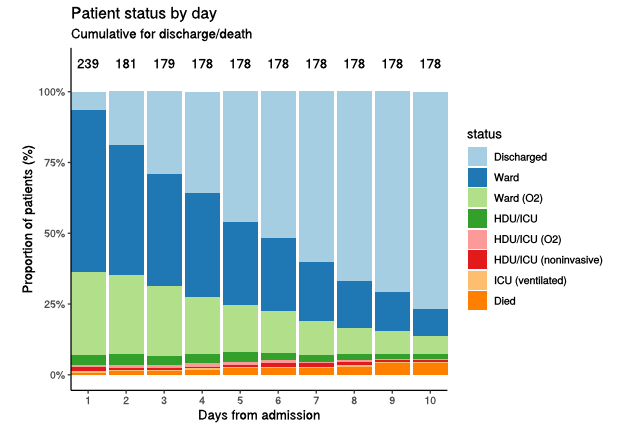
I know I’m meant to be reading the details of the SPI-M papers but there’s only so many coloured curves on a chart you can stare at before they all start blending into one. I’ll re-convene on that tomorrow, but in the meantime I found something interesting in the case data. 1/7
This is plotting the growth rates for the 5-year age groups up to 30 over the last 3 weeks. You can see the explosive growth in the 20-24s and 25-29s following Step 3, and then a significant deceleration (falling growth rates) over the last few days. 2/7 

On the other hand, the growth rate in school-aged children (5-9 and 10-14) looks to be resurging, having taken a short break over half term – suggesting that we might have a rocky few weeks ahead in the last few weeks of the school summer term. 3/7
But anyone who says with certainty that they know what will happen next is probably wrong. (it’s a bit like that alleged Richard Feynman quote: if you think you understand quantum mechanics, then you don’t understand quantum mechanics). 4/7
I’m very much with @BallouxFrancois on this: there’s a wide range of outcomes that wouldn’t surprise me, ranging from a new surge to a fizzle-out, or quite possibly a sort of bumpy plateau as different regions and groups rise and fall. 5/7
https://twitter.com/BallouxFrancois/status/1404474308651630595?s=20
And that, in a nutshell, is why the government had to delay: because we don’t even have a good handle on the short-term dynamics, let alone what would happen if you tried to layer Step 4 on top. So our funnel of uncertainty is very wide, and contains some very nasty… 6/7
…scenarios in which the NHS is overwhelmed. The job of the next 4 weeks is to let the data settle down, and to do enough vaccinations that those extreme scenarios become highly unlikely. Then we can proceed, not pain-free, but knowing the downside risk is contained. /end
PS with thanks and apologies to @nicfreeman1209 whose age-group growth rate curves I was inspired by, except I got the colours the wrong way round.
https://twitter.com/nicfreeman1209/status/1402913018053267459?s=20
• • •
Missing some Tweet in this thread? You can try to
force a refresh









